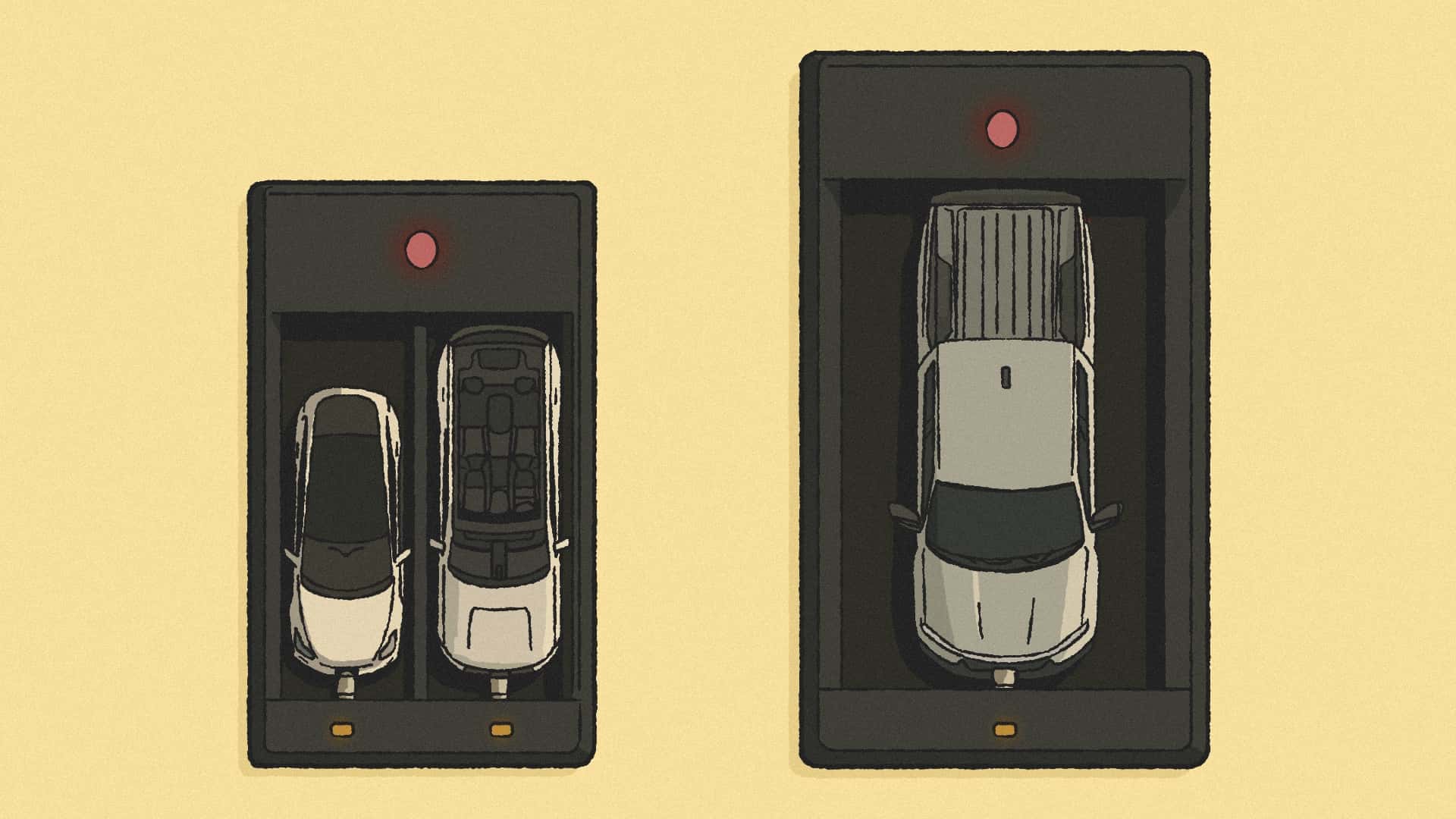
Even if media jobs are heavily concentrated in America's big coastal cities, I still consider living in the Midwest an asset to my professional career. Electric vehicles are still somewhat controversial here in Ohio, and I constantly find myself battling misinformation that unfortunately permeates down to the bone with Midwest consumers.
For example, I constantly hear that EVs are expensive to run and take too long to recharge, and that we’re still waiting for a true breakthrough for EVs to be viable transportation for any driver. Many people here truly believe EVs will never be ready for prime time. Thus, they say, manufacturers should invest more in hybrid technology, because they’d rather have a hybrid.
Prod a little more, though, and many of them will admit that they didn’t really want a hybrid, either. Their loss.
While it's not my job to sell cars, I’ve devoted myself to the cause of proving that EVs are cheap to run. I extol the virtues of plugging in, telling folks that any EV downsides aren’t that deep, often using whatever plug-in press car I’d have on hand to illustrate just how cheap the thing was to recharge and run. But not all EVs are good at convincing the end user of cheap, green motoring. Some vehicles make my job harder, only proving skeptics' point that EVs are more trouble than they’re worth.
One recent offender: the Chevy Silverado EV. A few weeks ago, I had a new Chevrolet Silverado EV LT Extended Range for a full week. I learned just how pricey it is to keep one of these super-sized trucks on the roads, and that all comes down to the size of its battery.

On paper, the Silverado EV has a lot of impressive specifications. The Silverado EV (and its GMC and Cadillac platform mates) genuinely can achieve stunning on-road, real-world range numbers. We've tested one that went 450 miles at freeway speeds. The traditional truck models, like the Sierra and Silverado, are praised for their range abilities while towing, able to do 200+ miles without stopping.
GM will tell us that this is why they are the way they are—customers want electric range, and they built those trucks to deliver. Solid reasoning, especially since the big GM electric SUVs and trucks are not small or light vehicles in the slightest. The curb weight of the 2025 Silverado LT Extended Range is over 8,500 pounds.
Yet, as impressive as those range and towing numbers are, they’re mostly because of the gargantuan battery installed in these trucks. That gargantuan battery might make for a gargantuan range, but it also evaporates one of the key assets of any electric car: low running costs and recharge time.

Here at InsideEVs, we try to verify the charging time claims from the manufacturer, namely the 10-80% charging time. For the Silverado EV, Chevrolet says it will do the 10-80% sprint in 40 minutes, when connected to a DC fast charger capable of 350 kilowatts.
It did. The Silverado reached its peak speed of 350 kW quickly, holding three-digit speeds for most of its charging curve.
But when I got the bill, I was shocked.
The battery in my tester is a whopping 170 kilowatt-hours, or about twice the size of what's in a Hyundai Ioniq 5 these days. A bigger battery will take longer to charge than a smaller one. And that means more electricity is used, so costs rise quickly.
For my charging test, including charging losses, the truck gobbled up 137.66 kWh for the 10-80% test, billed to me at $0.64 kWh during on-peak hours. This all added up to a stunningly high $89.09—not even for a full battery. If I were to charge to 100%, which some may choose to do if they’re on a long trip and need the range, that recharge would have no doubt been over $100. Also, it took 40 minutes out of my day.

Granted, the best fast-charging results tend to be of the "get what you need and go" variety, charging until you have what's required to reach your destination. But that doesn't apply in every situation, including long-range road trips.
It was one of the first times I truly thought to myself, “damn, maybe these anti-EV folks have a point.” If I wanted to proselytize to EV non-believers that the cars were cheap to run and quick to recharge, this car just shot that idea in the heart.
By comparison, refilling the 36-gallon tank of a gas-powered Silverado 2500 with regular unleaded (at $3.08 per gallon) would have cost about $100, marginally more than the electric one. And it wouldn’t have taken 40 minutes. Where’s the benefit here? A Silverado EV with the 205 kWh Max Range battery would have only fared worse.
Keep in mind this is under ideal circumstances, too. Not every EV charging station has 350 kW support. Or, if they do, it’s not uncommon for it to not be at full speed—sometimes throttled by the power service provider, under instances of high local demand.

A full 350 kW is a lot of power to pull, especially for just one car, especially in the summer when businesses and homes are trying to keep cool in an ever-hotter globe. A slower DC fast charger would have made this experience an EV charging nightmare scenario – long and expensive.
Home charging wouldn’t fix the problem, either. The Silverado EV is often cited as going from flat to full in eight to 10 hours on a Level 2 home plug—but that assumes you can max out its optional 19.2 kW AC onboard charger.
This type of charger would require an 80 amp slot on a home junction box, a tall ask for a lot of older homes, which often have 100 amp service for the whole home. A reasonable 40-amp charger (9 kW), like probably most Americans have, would double the Silverado EV’s home charging time.

We can’t throw out the baby with the bathwater, though. I still believe in EVs, I just think this one is the epitome of everything wrong with what American manufacturers think American drivers want from an EV.
The Silverado EV is large and heavy, some would even say dangerously so, and thus it’s going to absolutely swill power and need the big battery to get the range numbers that the brand thinks consumers want.
I also recognize that the cost of electricity and gas both vary broadly, so some buyers in California may be getting a better deal, comparatively.
Still, I think that we’ve proven that smaller batteries are more than fine when paired with smart design choices that prioritize lightness and efficiency. Look at Lucid Motors. The Lucid Air sedan is one of the most efficient EVs on the planet, partially because of its super aerodynamic shape, advanced electric motors and laser focus on using energy sparingly.
The insect-shaped Hyundai Ioniq 6 is an efficiency king because of its aerodynamic shape and relatively low weight. When I was in China, the featherweight, roughly 2,500-pound BYD Seagull could touch the 5.5 miles per kWh figure partially because it was so light (and slow).

(Oh, and making a battery that big? Not exactly great for the environment, either.)
Chevrolet itself is rolling out smaller battery versions of the Silverado EV, as well as working on new battery tech to get more range from less battery. These things will no doubt address some of my critiques I had from my week with the truck. Most of us in this field don't think this "huge battery" approach can last forever, and that hybrid trucks or chemistry breakthroughs to allow for smaller packs will help electrify the trucks Americans love so much.
Until then, the trend of chasing range with no regard for how we get there won’t actually help the perception of EVs as being too expensive and not ready for prime time. A 170 kWh battery is no doubt part of why my Silverado EV’s price tag was a lofty $85,000. But this isn’t a Chevy issue.
My critiques on charging time and charging costs could easily be leveled at other big battery EVs, like any Rivian R1S or R1T with the Max Pack. Heck, even the pioneer in this space, Tesla, is guilty too; a Cybertruck's battery is estimated to be in the 120-125 kWh range, so nearly double what's in a Model Y.
Smaller EVs with smaller batteries are simply better. Hopefully, we’ll figure that out sooner rather than later.
Contact the author: kevin.williams@insideevs.com







